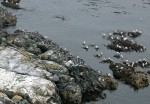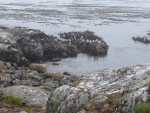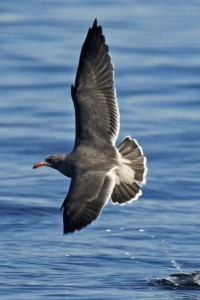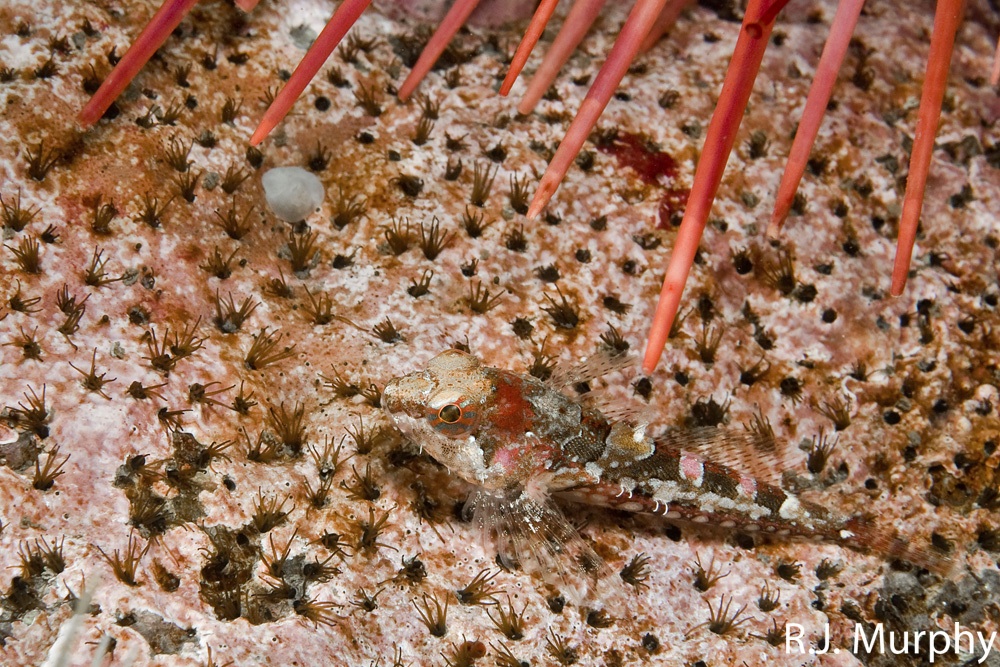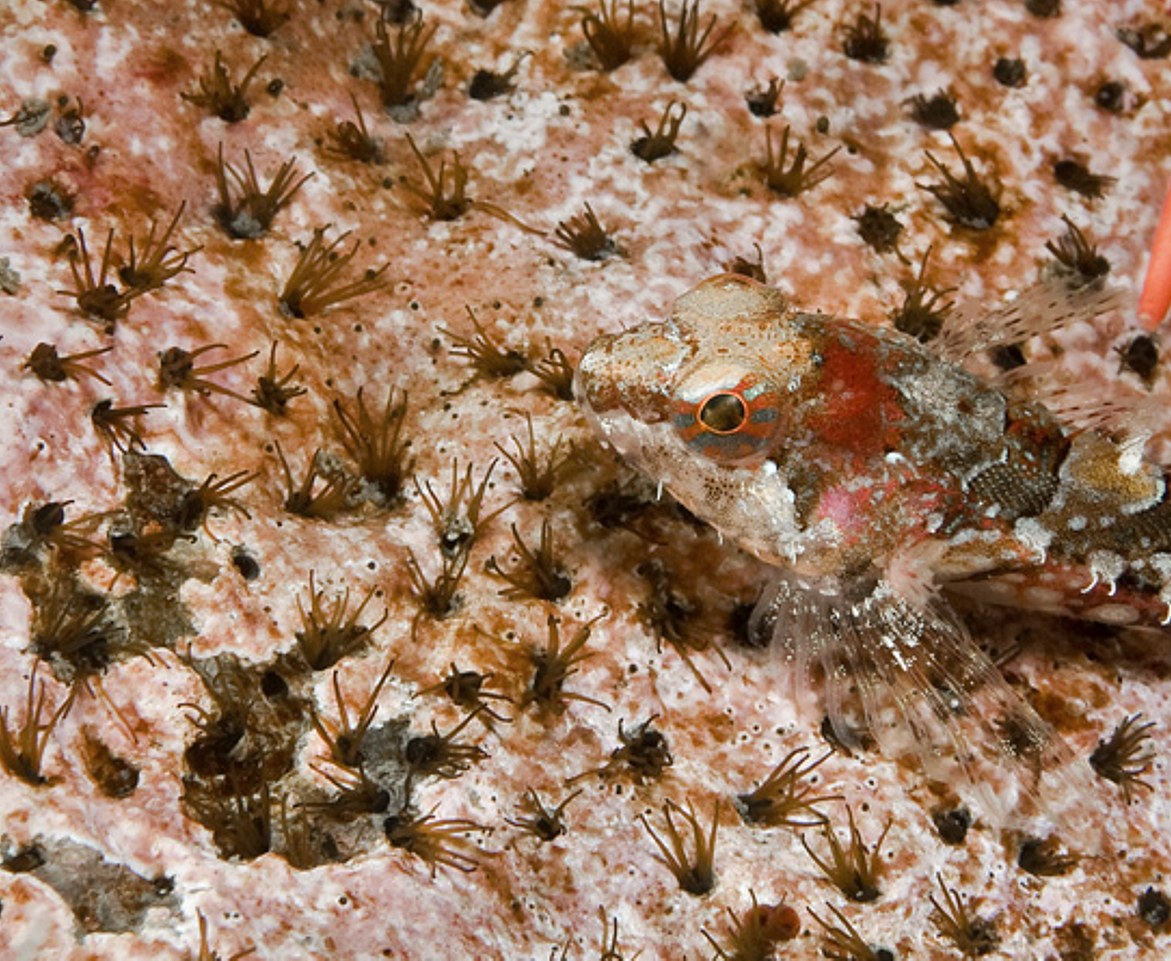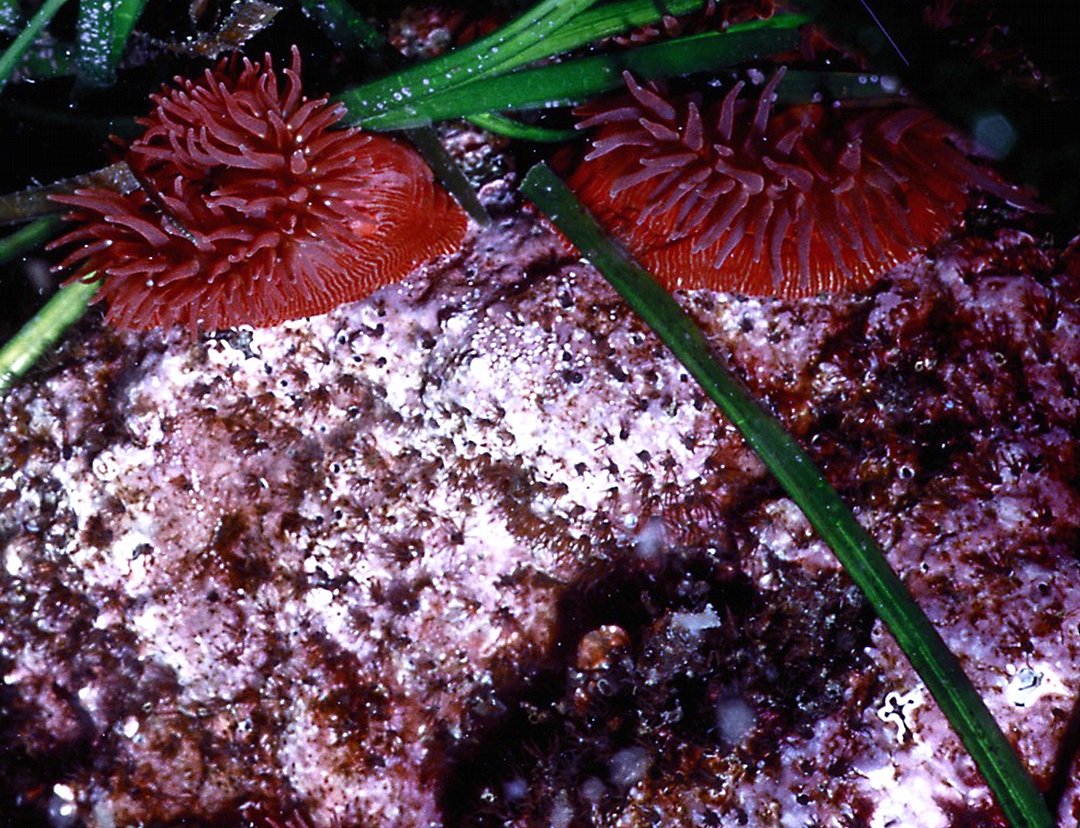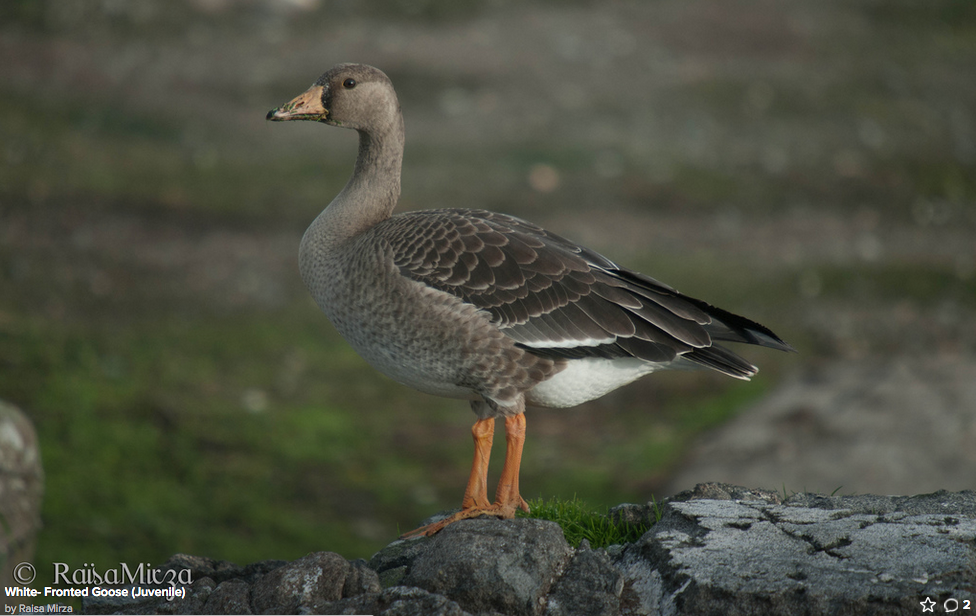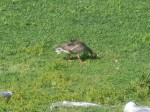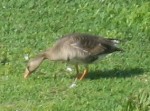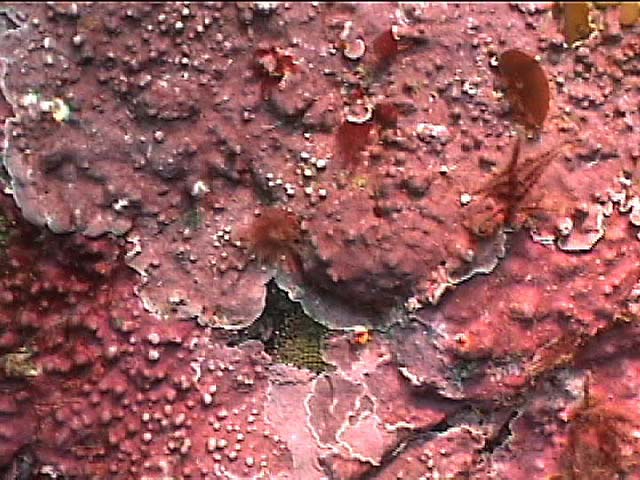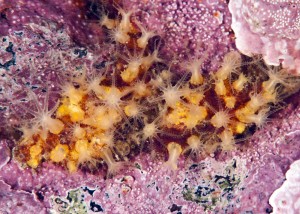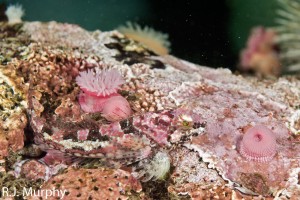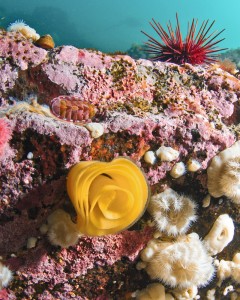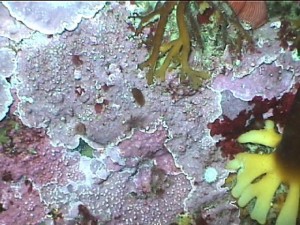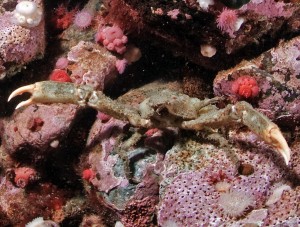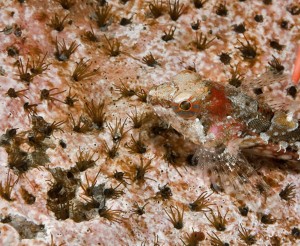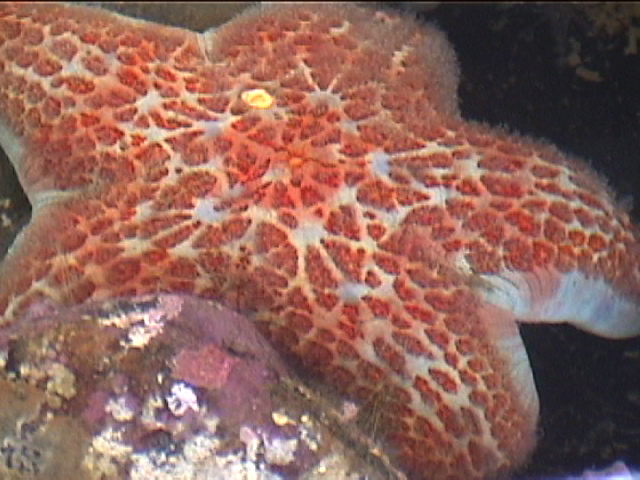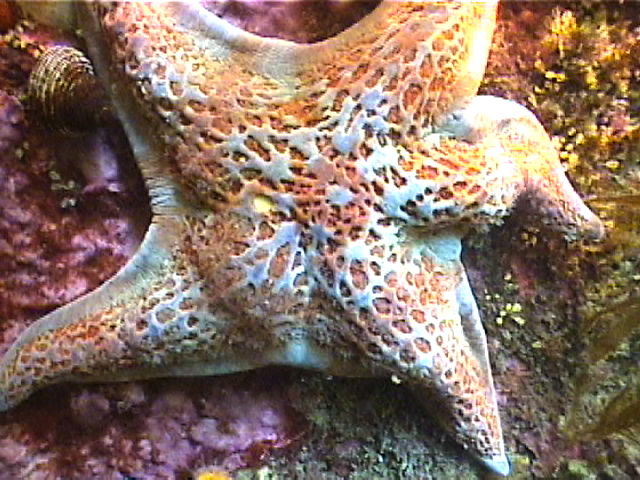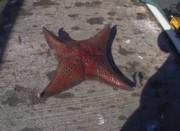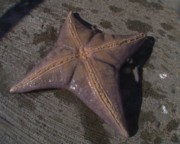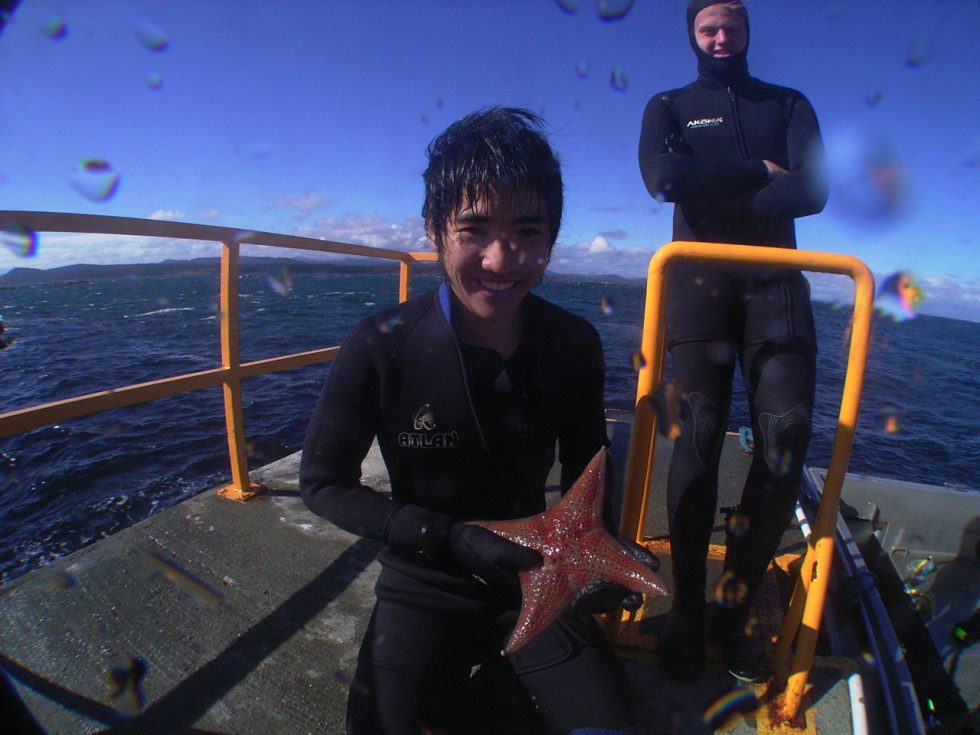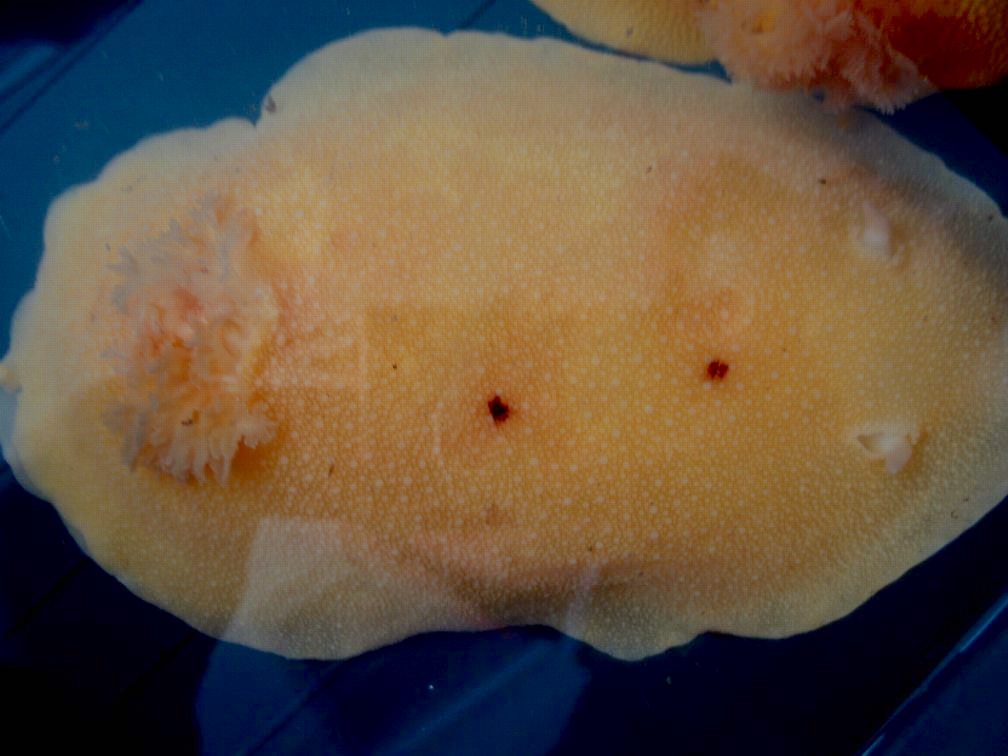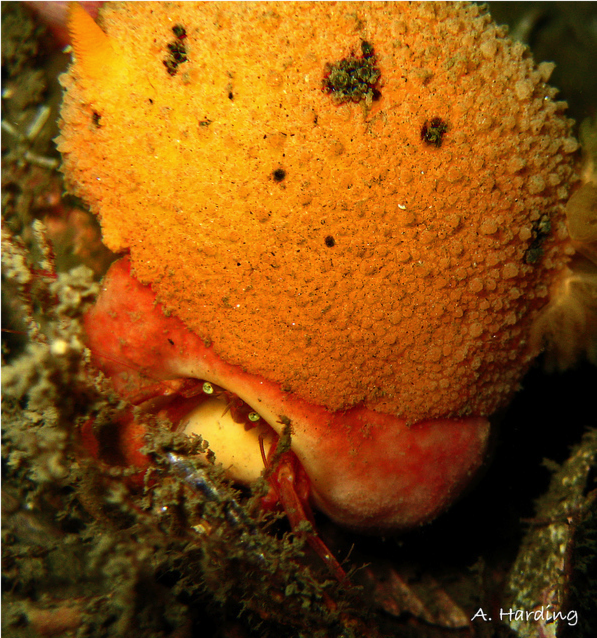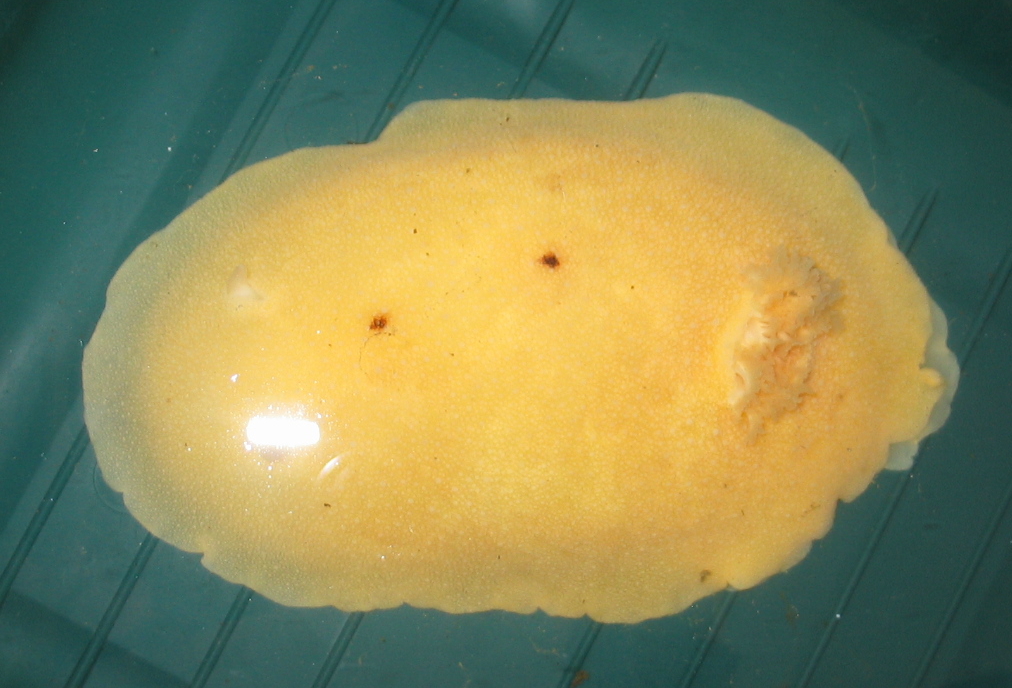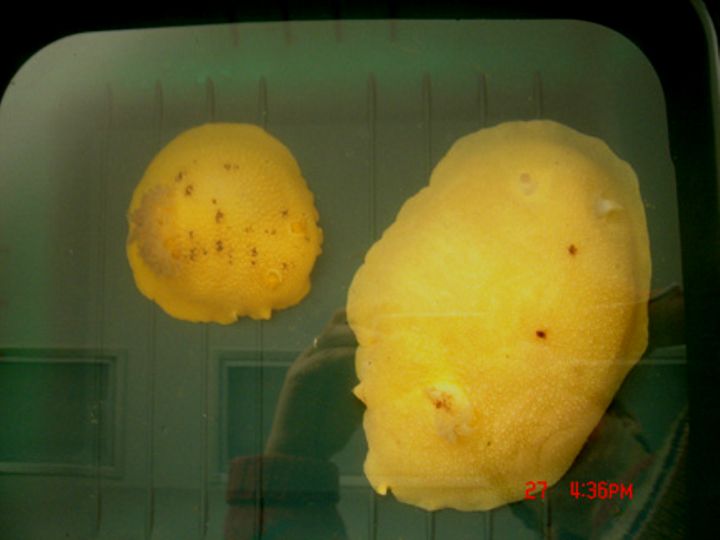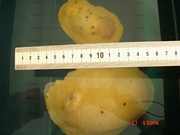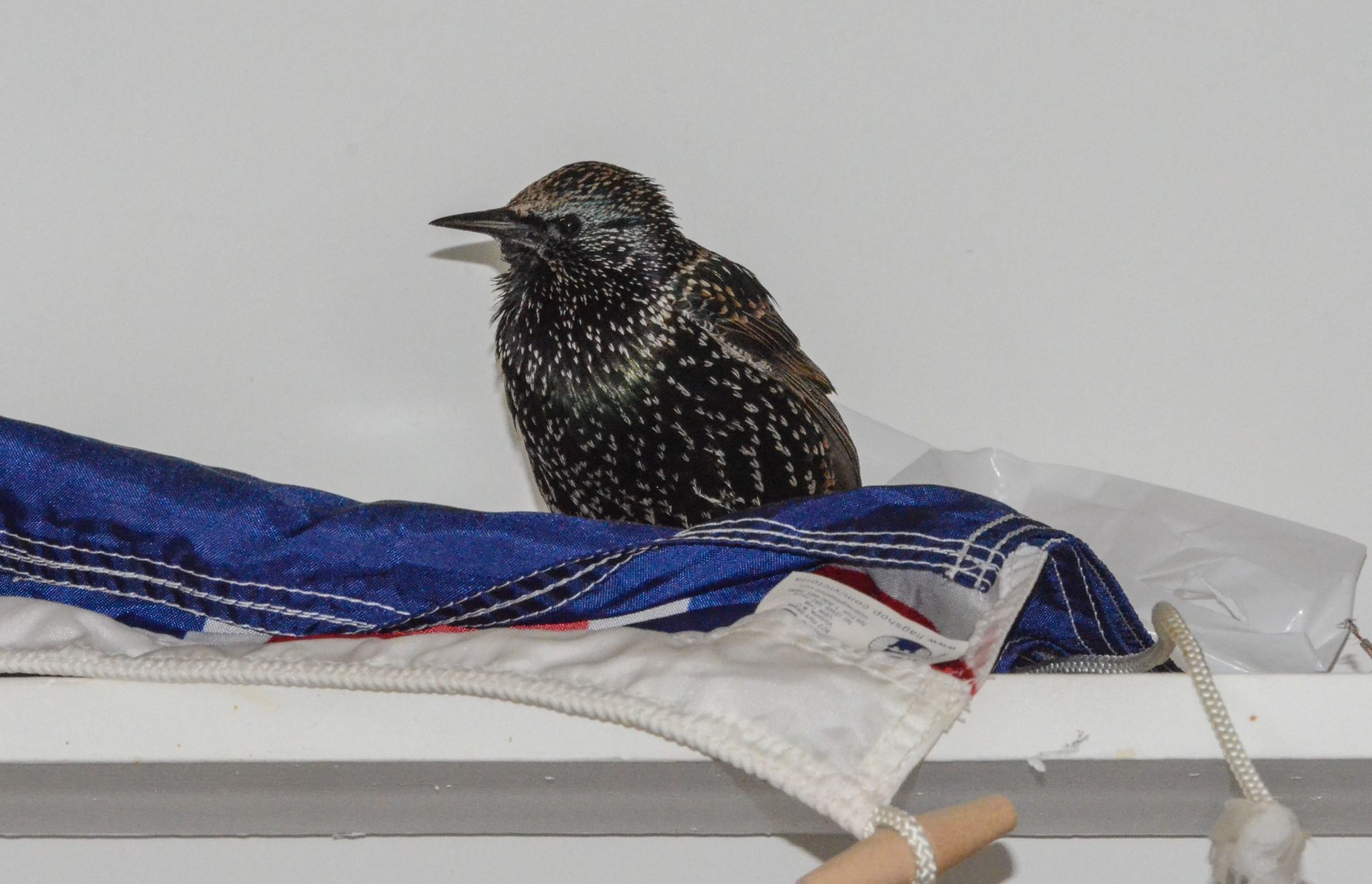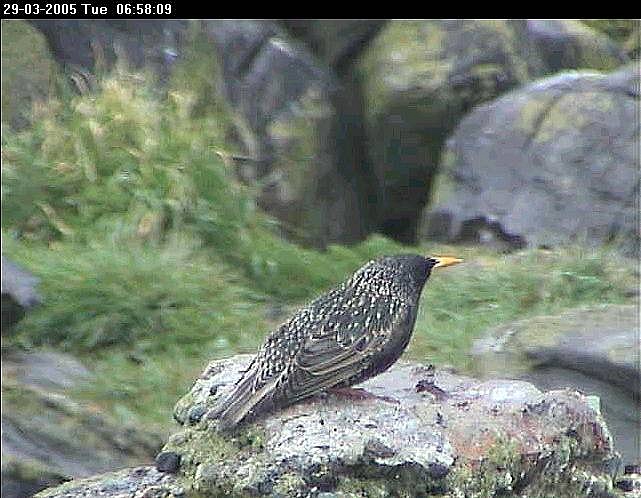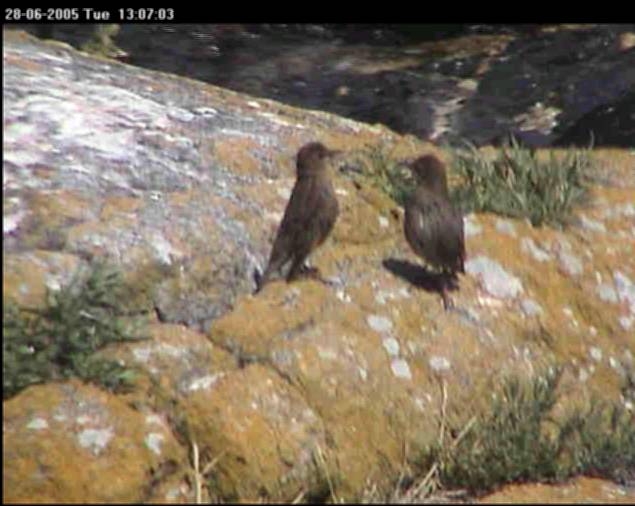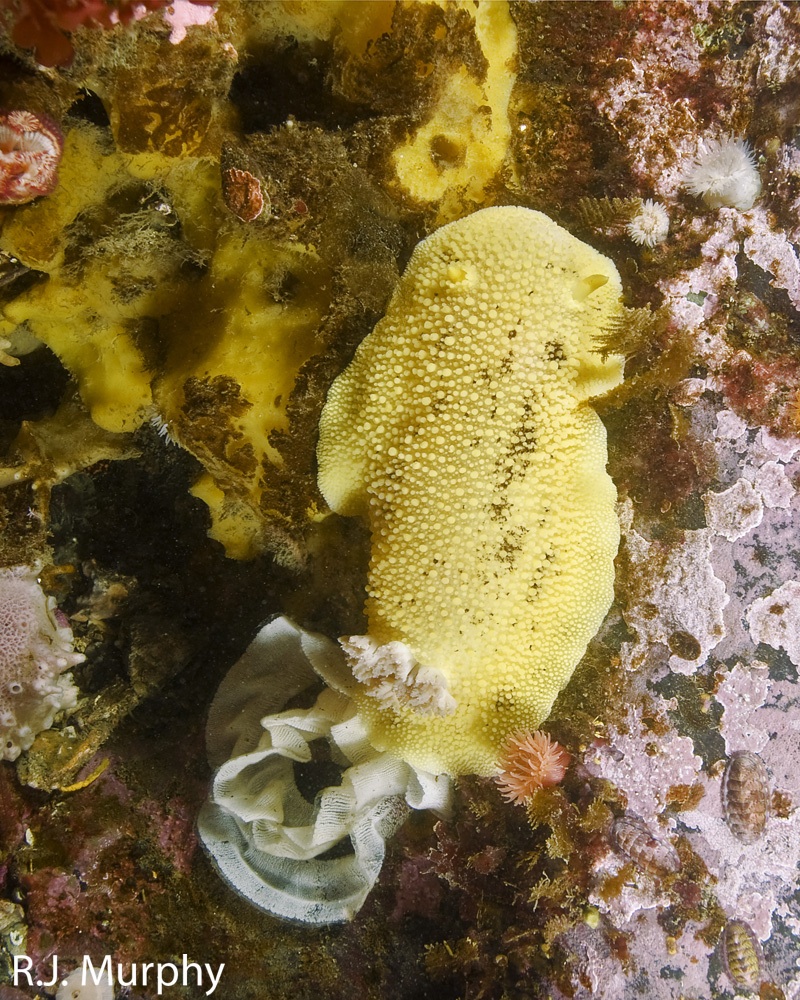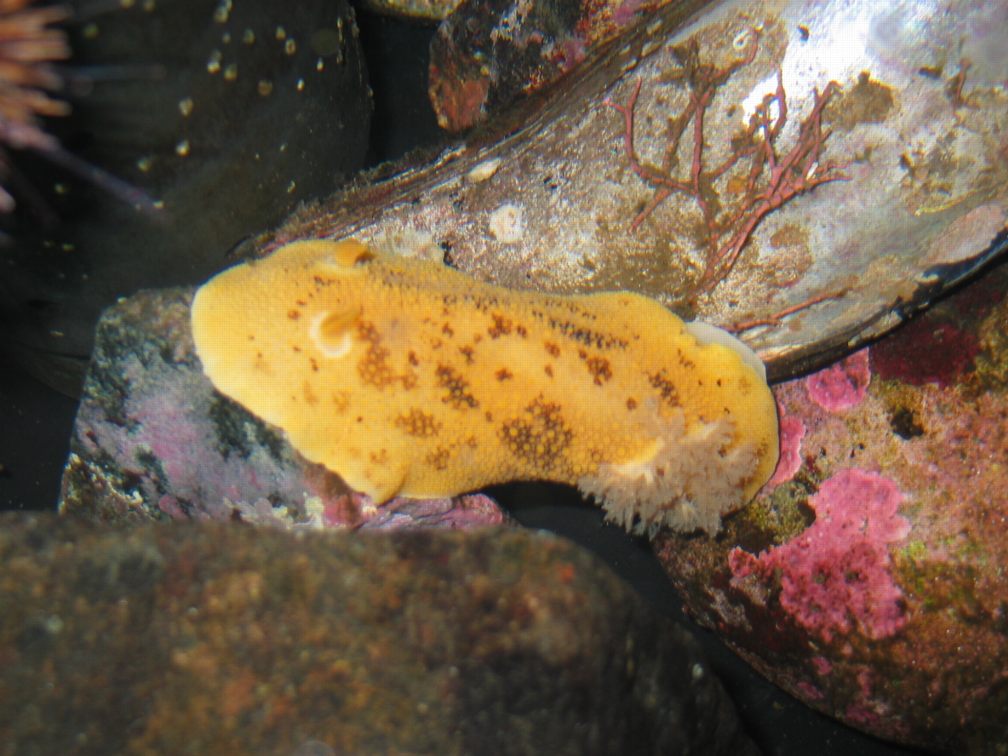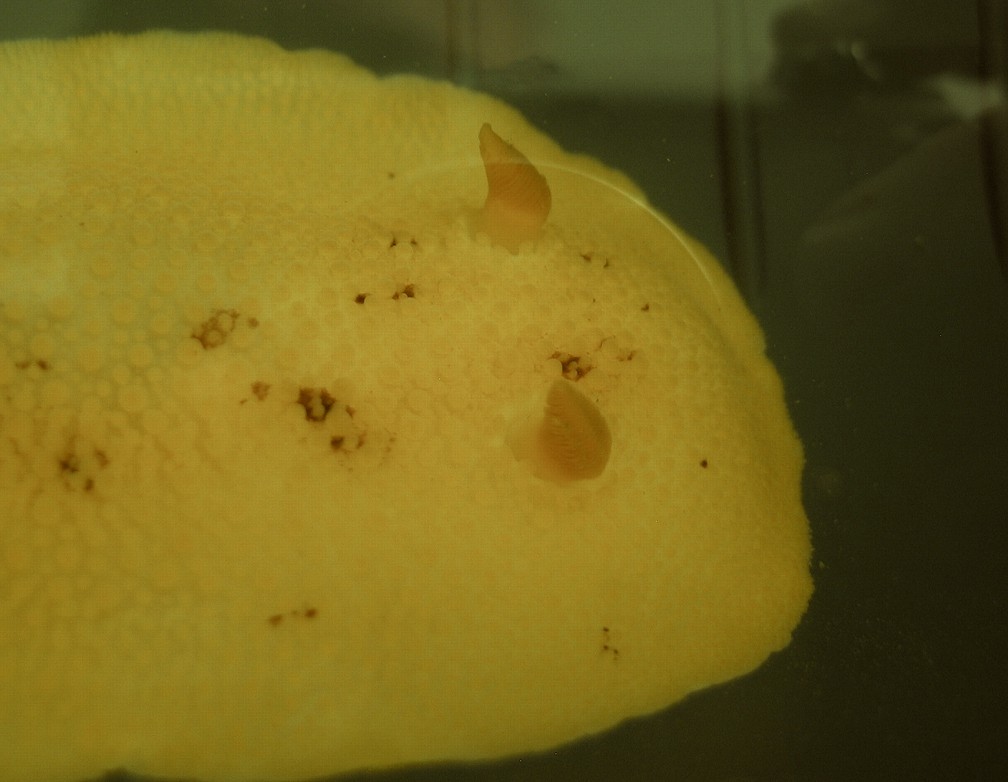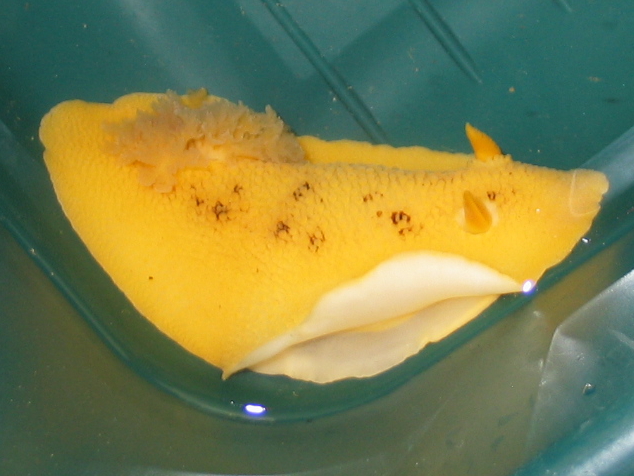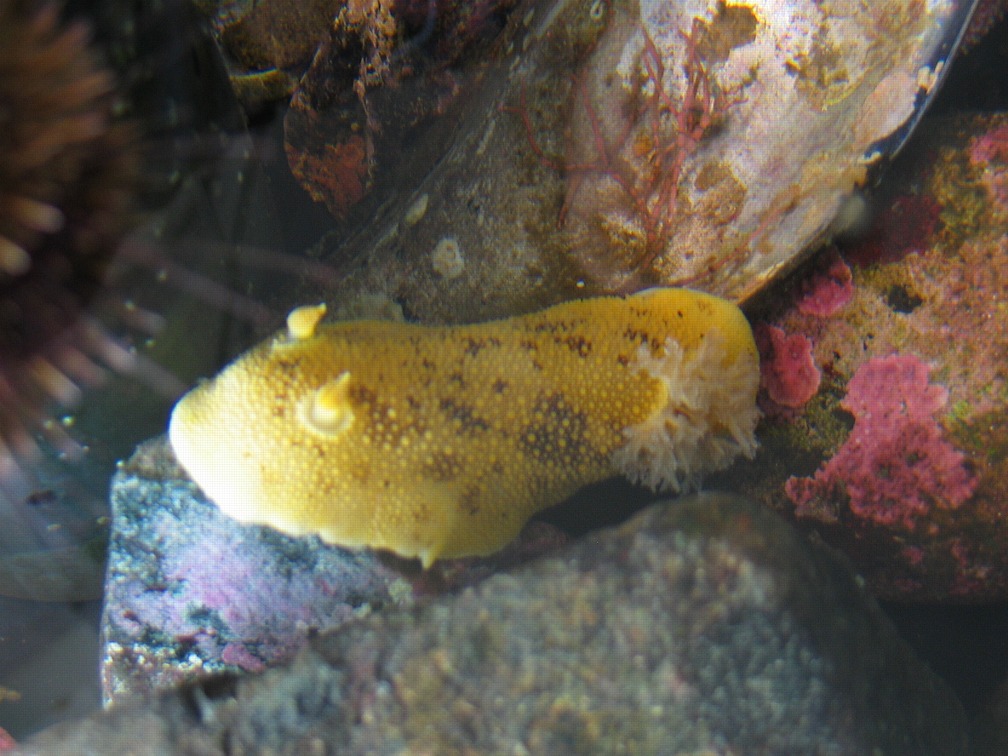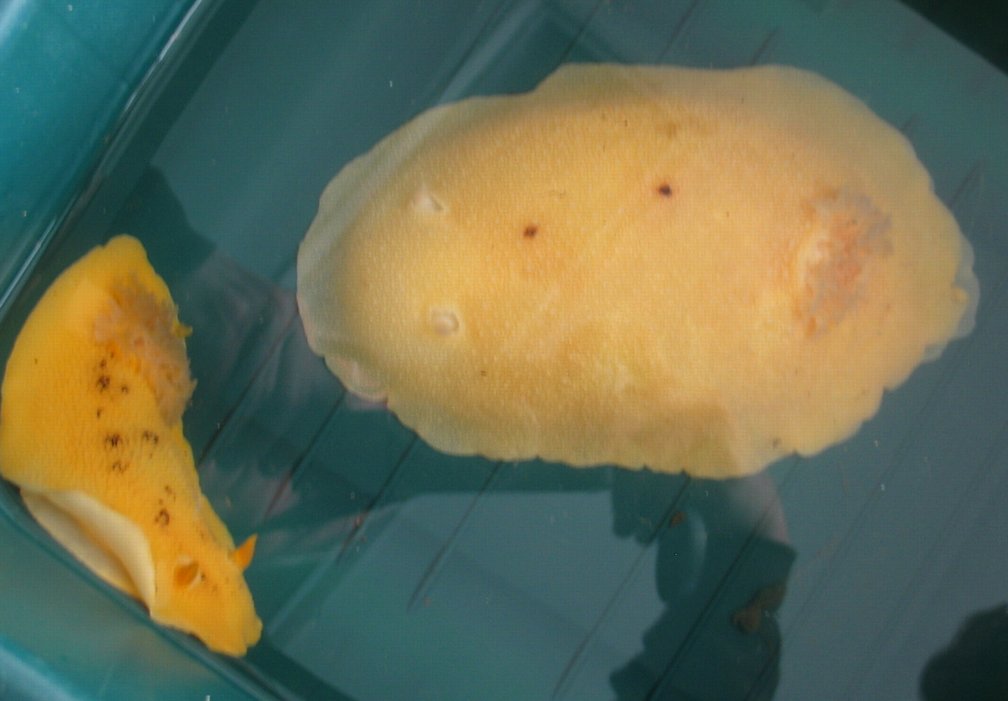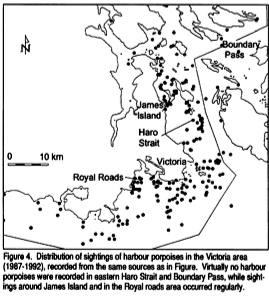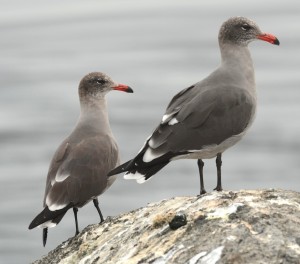 Heermann’s Gulls , (Larus heermanni) start turning up at Race Rocks in July. On July 6 of this year a record number , 574 Heermann’s gulls were observed. This was a notable increase from the 21 recorded a few days earlier The winter plumage is quite dark compared to the summer breeding plumage. They migrate here up from the breeding grounds in Mexico.
Heermann’s Gulls , (Larus heermanni) start turning up at Race Rocks in July. On July 6 of this year a record number , 574 Heermann’s gulls were observed. This was a notable increase from the 21 recorded a few days earlier The winter plumage is quite dark compared to the summer breeding plumage. They migrate here up from the breeding grounds in Mexico.
- This flock of Heermann’s Gulls was observed from the tower in early September , 2005. There are approximately 100 gulls but because of the dark color are difficult to see. Look for the black and white tails on a brown body. (GF. photo)
- Here is a close up of the same south-east bay from the ground level ( Pam Birley Photo)
Ryan Murphy took this photo in 2010 showing features of the flight feathers.
On 574 Heermann’s gulls today which is a notable increase from the 21 recorded on Friday.
| Domain | Eukarya |
| Kingdom | Animalia |
| Phylum | Chordata |
| Sub-Phylum | Vertebrata |
| Class | Aves |
| Order | Charadriiformes |
| Family | Laridae |
| Genus | Larus |
| Species | heermanni |
| Common Name: | Heermann’s Gull, |
See other posts on this website tagged with Heermann’s Gull

